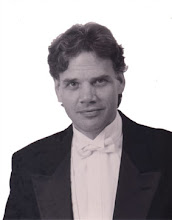As we prepare to perform portions of the All-Night Vigil, I thought I’d offer some information on the work as a whole. Rehearsal time is so precious; I tend to avoid doing a lot of talking. There is a lot to say about this music, however, so this blog is a useful alternative. –These are meant to be rather informal comments just to give you some background.
Rachmaninov’s Vigil can be seen as the culmination of large-scale cultural project begun roughly in the last quarter of the 19th century, and continuing until 1917, when it was abruptly and brutally shut off. The Moscow Synodal School was the primary focal point around which this campaign took place. Rachmaninov dedicated the Vigil to Stepan Smolensky, and it was Smolensky, more than anyone else, who spearheaded the exploration of Russia’s musical past, and the invigoration of Russia’s indigenous musical culture. Pavel Chesnokov, in a private letter, writes about Smolensky,
The [Moscow Synodal School] where I studied from age seven to eighteen, was headed by a prodigious musician, a profoundly educated man and the first expert in the field of ecclesiastical chant—Stepan Vasilievich Smolensky. Smolensky reformed the Synodal School to such an extent, placed scholarship at such a high level, provided for the Synodal Choir so well with its celebrated conductor Vasily Sergeevich Orlov, that the School began graduating the best choral conductors, and the superb performances of the choir compelled all composers to write works for the church, thereby giving birth to a ‘new direction’ in church music. (While he was director of the Synodal School and Choir, Smolensky was at the same time a professor at the Moscow State Conservatory, teaching the “history of ecclesiastical chant.” His pupils include: S. Rachmaninov, Yuri Sakhnovsky, Gliere, and others.)
Moreover, this very same Smolensky, besides his great work in the school and with the choir, also collected old manuscripts of church music. For this purpose, he was often sent by the synod on journeys to monasteries and abbeys, from which he gathered his main materials. He collected about two thousand manuscripts, and each manuscript is a thick book in wooden bindings covered with leather.[i]
Chesnokov refers to the great achievements of the Moscow Synodal Choir, which was indeed a spectacular ensemble. Elsewhere, Chesnokov makes it clear that the ideal choir that he describes in his book on choral conducting had its embodiment in the Synodal Choir under the direction of Orlov.
Knowing that you are unlikely to read an overly-long blog posting, I will draw your attention to four brief points: 1) Rachmaninov’s use of ancient Russian chant in his work should be seen as part of this larger project – indeed, many view the Vigil as the culmination of this broad campaign led by Smolensky. 2) Rachmaninov takes these spare, simple, austere chants, and, by bringing together harmonic vocabulary from European musical traditions, and adding elements of his own distinctive stylistic voice, he creates a new synthesis. 3) Rachmaninov and choral composers of his generation tended to treat the choir as an orchestra of voices. The Russian church has always forbidden the use of instruments in worship, so in the Russian choral tradition, the choir increasingly came to take on the techniques of orchestral writing: multiple octave doublings, the fullest possible deployment of the choir in terms of its range, etc. 4) The spectacular achievements of Russian choral music were brutally suppressed in 1917. The magnificent Synodal choir was dismantled; sacred music was severely repressed during the Stalinist era. The destruction of this tradition is one of the most devastating cultural losses ever to occur in the world of choral music.
[i] Quoted in Milos Velimirovic, “Some Letters of Pavel Chesnokov in the United States,” in Slavonic and Western Music: Essays for Gerald Abraham, ed., Malcolm Hamrick Brown (Ann Arbor: UMI Research Press, 1985), 264.

No comments:
Post a Comment